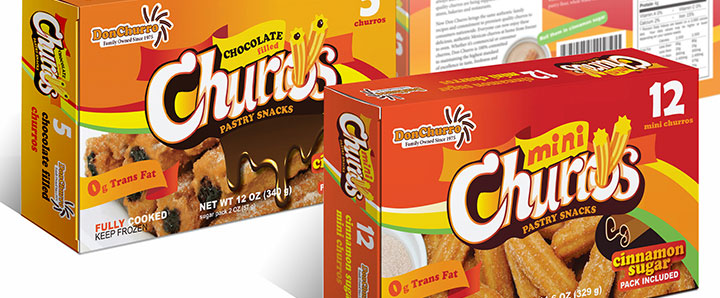Here are the steps of the design process to help packaging designers achieve the best results.

Before starting any packaging design project, understand the scope of the work, ascertain the client's needs and preferences, and then gather information.
- Who is the target audience? Who are the competitors? (Who)
- What is the project goal? (Why)
- When is the deadline? (When)
- What are the specifications of the project? (What)
- What is the budget? (How much)
- How should you present the design? (How) - Any branding guidelines?
- What is the required message?
- What did the client have previously?
- What does the client have in mind?
No one can read the client's mind. Clients, usually the executives of the sales or marketing department, are more familiar with their own businesses than anyone else is. Clients know their niche in the fashion industry, their market segments, and their competitors. The fastest way to study the project is to learn directly from your clients' experience and expertise. Some clients may provide particular direction or tell you what they like. Asking the right questions helps designers to win the case at the beginning and gives them a starting point.
2. Research:
Research! Research! Research! How do you research? Using appropriate keywords on Google and on Pinterest is always a great way to start. All information is at your fingertips. Online research not only provides you with what you need to know about the client and the project, but also gives you creative inspiration. Here are five common research directions for all design projects:
- A. Brand Research
Learn all you can about the brand. What is that brand's position in the fashion industry? Check out their past and present designs. Through these, designers can quickly learn what has been done and plan the next moves. Designers give a brand the right visual personality through brand research. You can't always judge a book by its cover-brand logo. Research your brand's history, mission, philosophy and brand identity standard that you should follow. Unless you know that marketers have carefully evaluated the brand and determined that it is moving in a new and innovative direction, your designs should still consistent with the existing brand personality across all design projects. Improving the design doesn't mean making it totally different from what the brand stands for.
- B. Competitor Research
Most markets have competition. Marketers do competitive research as do designers. Designers should first have an understanding of what product and value positions they are up against, then further develop design strategies to stand out from all competitors.
- C. Media Research
When doing brand and competitor researches, check all of your client's and the competitors' project media. When it comes to media research, the scope of the research need only extend to the same project type. If the project is a shopping bag, then research all shopping bag designs. Don't stop with other shopping bags in the fashion industry. Extend your shopping bag research to other industries.
- D. Brain-Storming Research
Looking for something different for your client, something that will stand out, you'd better use a mind map with different keywords to do wild-card research, then combine or utilize ideas from other media. A clever designer can apply a successful concept or theme from any design projects to a packaging design project. This brain-storming process sometimes can result in unexpected surprises that standout from more mundane packaging.
- E. Site Research
It is important to walk through both the client's and competitors' stores, and research to see where and how the product will actually be displayed in the store. Will it sit on shelves or hang on the walls? Also, how will the customers see the merchandise?
We often hear "think outside the box." To think outside the box, don't start to work on designs immediately. Begin with the basics. What is the box? You'll learn that from doing the research suggested above. If you don't know what the box is, how can you tell whether your creative idea is outside of the box or not? Research is the key to gaining successful results.
Unfortunately, some young designers skip this part altogether or don't do enough research. Thorough research gives designers confidence during the design presentation. They will have a wider vision and excellent knowledge of what's been done before; what seems to have worked and what hasn't; what's been overdone, and so on. Providing clients with a clear explanation of why you did and what you did is a powerful persuasion tool!
3. Concept Development:Don't jump right into graphic software to try to create your designs before you have a solid plan. Grab pencils and papers and sketch your design ideas. Brainstorm, mind map and communicate with an internal team. Include a copywriter to help work out a winning strategy. For some special, costly proposals, you may get the client's approval at this planning stage. But even then, it's not professional to present rough sketches. It must be a presentable, good sketch.
4. Design Production:For most single page projects like packaging design, the designer needs excellent skills and knowledge in Adobe Illustrator. Based on the sketches, designers will use computer graphics to present the concept and theme. The designer should decide upon any templates associated with the structure, such as dielines, sizes, and shapes before adding the graphics.
5. Prototype / Mockup:Packaging design is a three-dimensional project. Never ask clients to "imagine" what it will look like. Designers must present what it will look like. Most clients prefer to see the actual size and materials. Some manufacturing vendors will provide you with a prototype service. For low budget or oversized projects, designers can use digital mockups instead of real products. Digital mockups can be done in Photoshop by retouching existing images or in 3D modeling applications. If mockups are provided at this stage, then the designer should provide the real prototype after getting the client's approval and before mass production.
6. Proposal Presentation:With your prototype or mockup, you can put together a nice show-and-tell presentation to provide a compelling reason that the client should use your designs, along with the way that these designs can help the client to be successful. Especially when explaining some special functions or showing how the packaging fits into the store environment, the designer should demonstrate these visually. As a wrap-up, the designer should recap the entire design's evaluation.
7. Client's Review, Revisions, and Approval:If the client loves the design with no revisions, this process could move right to the client's final approval. But in most cases, clients will have revisions and will review several times before approving for mass production.
8. Prepress & Mass Production:Usually, designers coordinate with print vendors on the prepress process to ensure proper results. Designers send digital files over to the print vendors when the vendors request them. Print vendors will send PDF files for digital proofing if it's a quick and very simple project. It's always better to request a color proof from print vendors since this is the last chance to make any changes. To avoid unnecessary argument later, most print vendors will request that designers sign off on going forward with process printing. So designers are well-advised to carefully proof and adjust the colors at this stage. After all, designers cannot judge the colors from the desktop screen or the printouts from low resolution printers. This color proof is the closest approximation of the actual prints. For three-dimensional projects, it's good to review the actual mockup.





